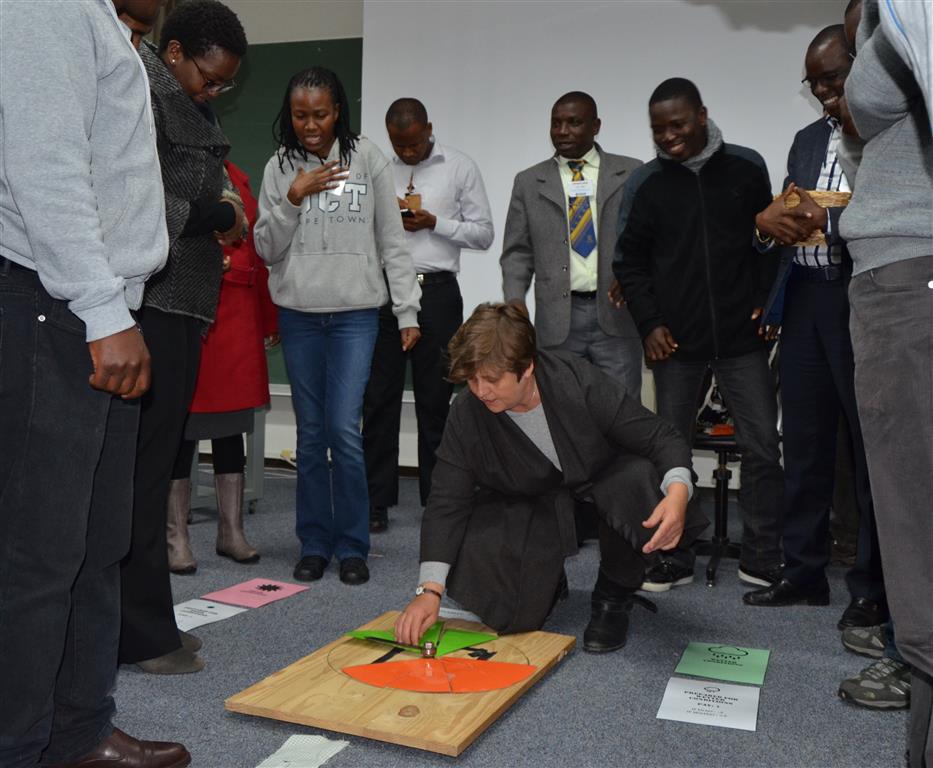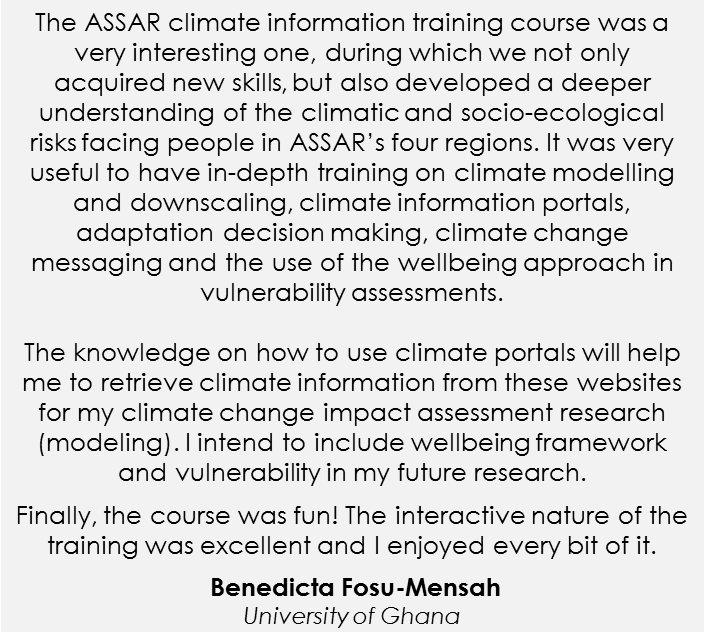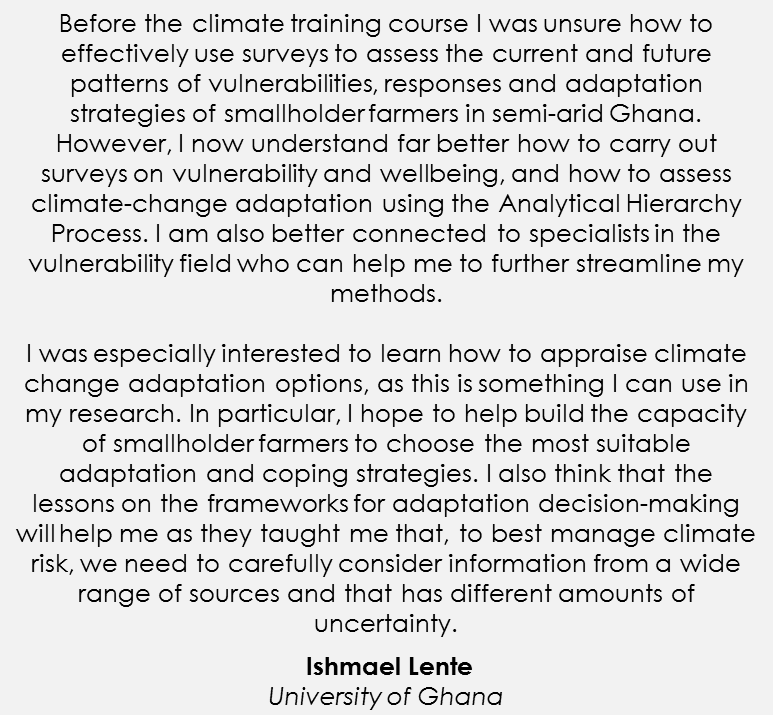How complex is it to consider climate information in decision making?

By Lucia Scodanibbio
It was an intensive eight days of armchair travelling: from remote communities in Kenya where we reflected on women’s challenges as they grapple with the impacts of climate change, to the city of Bangalore where ways are being sought to provide 10 million urban inhabitants with a constant supply of water. In Ghana and Mali we heard of farmers suffering increasingly from the delays in the onset of the rains and who – hard-pressed to adapt to this new context – are trialling different types of crop and water-storage systems. In northern Namibia we saw how vulnerable communities in the Onesi constituency need to sell livestock and receive drought relief from the government at times when the rains fail.
These were just some of the stories shared by the 23 participants who converged at the University of Cape Town, in South Africa, in late September 2015 to attend ASSAR’s training course on understanding climate information and adaptation in the context of semi-arid regions. Considering the mix of people attending the course – ASSAR researchers and stakeholders hailing from government institutions, NGOs and research institutes from 10 different countries – it is unsurprising that different and rich perspectives, experiences and knowledge abounded. Yet, the challenges, impacts and risks facing people across the African and Indian semi-arid regions are similar, and include rising temperatures and more extreme, unpredictable climate events. These challenges call for structured adaptation approaches that can help local populations increase their resilience and preparedness.
Improved decision making
During the course, the participants learned that in order to make decisions that will help people manage and adapt to climate risks in contexts where multiple biophysical, socio-economic and governance factors are at play, it helps to follow a series of discrete activities that can assist in addressing the following questions:
- Vulnerability and risk assessments: What makes us vulnerable? How serious are the risks we are exposed to and when will they occur? Are there hidden opportunities?
- Understanding observed and future climate projections: Will it be hotter or colder, wetter or drier? Will there be more extreme events? Will these changes further exacerbate the risks and vulnerabilities identified above?
- Developing and appraising adaptation options: What responses could be developed? Which are the most urgent, given the medium and high risks identified above? Are the proposed options robust in the face of uncertainty? Are they politically and socially acceptable and/or financially feasible?

Simulations and explorations
During the course of the week, participants familiarised themselves with a number of available climate portals – databases that provide information on past climate trends and future climate projections. They became aware of the critical importance of correctly querying these portals and accurately interpreting their outputs in order to avoid serious, yet common, mistakes in their application. As they learned about global and regional climate models (which help to understand climate systems and how these might change in the future according to the scale of anthropogenic activities) they also realised the inevitable shortcomings and uncertainties associated with simplifying real-world phenomena to discrete variables that computer-simulated models can grapple with.

Yet it was not all PowerPoints and computer simulations. The participants also had a chance to build towers with (raw) spaghetti and marshmallows to learn about creativity and collaboration. They pretended they were farmers, agricultural extension officers and municipal planners forced to make investment decisions in the face of uncertain seasonal forecasts. They also worked as regional teams to ensure that the specially-convened “Parliament of African countries” would agree to their proposed adaptation plan for a critical regional issue – one that was discussed and revisited countless times during the course of the week.
“Site-specific historical climate trends, as well as future climate projections, will help to track how climate has changed in the past and show a picture of how it is likely to change in future. This will help communities to fully understand the implications for adaptation and also help governments to understand the importance of supporting climate adaptation initiatives”, reflected a participant at the end of the course, as he thought about its utility.
As ASSAR colleagues and regional stakeholders left Cape Town, we hoped that the strengthened relationships resulting from the course, and an increased understanding of what ASSAR aims to achieve in the next few years, will lead to more transdisciplinary collaboration, and heightened knowledge on climate information and adaptation.



